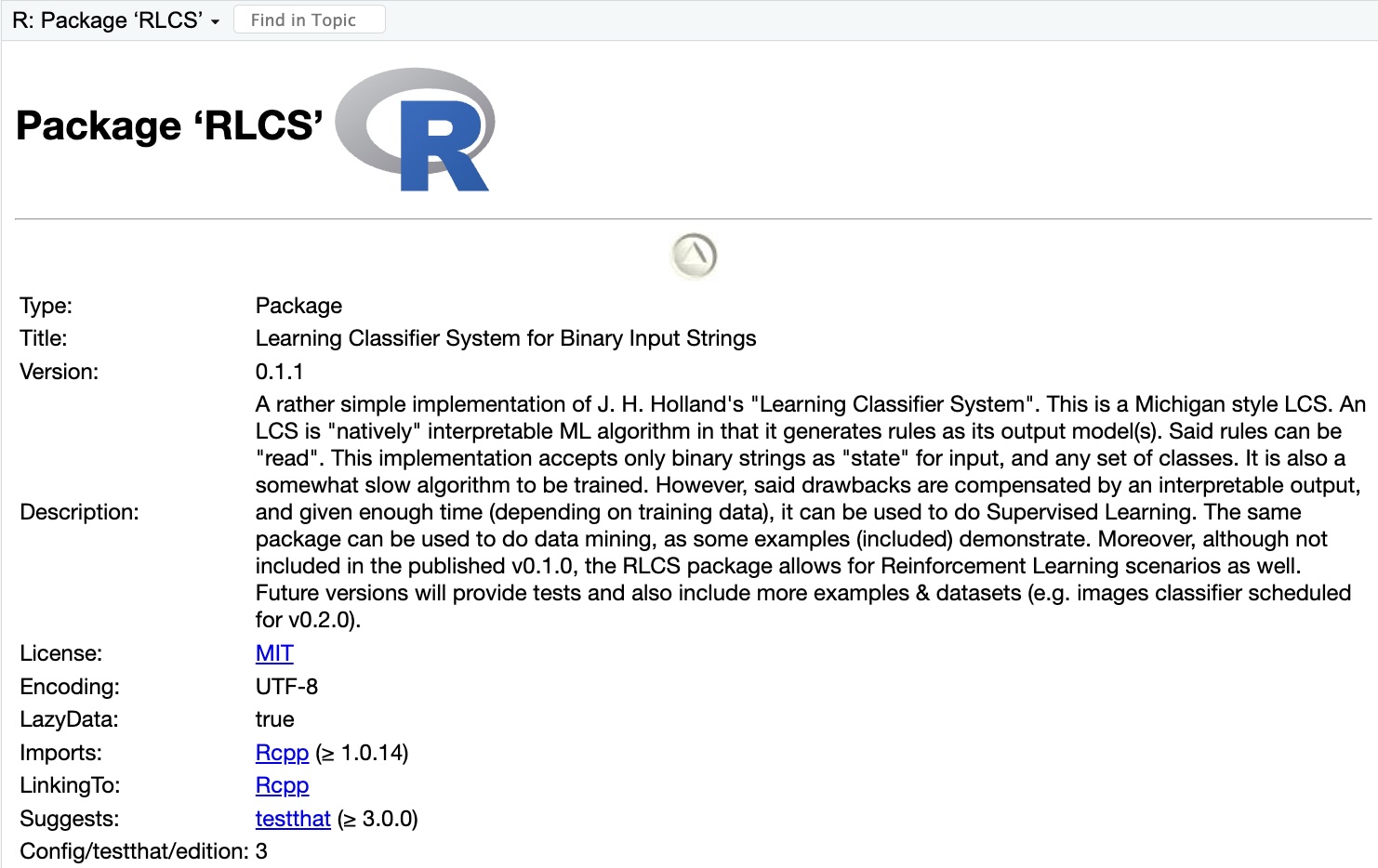A milestone for this project
About a year ago (my first post on this topic was published in December 2024) I decided to look into developing my first R package for an (almost) unknown Machine Learning algorithm, John H. Holland’s “Learning Classifier System”.
Well, it is now a real thing. The project is published and available on my GitHub.

Now this means a few things for me:
I am now “capable” of coding an R Package, and share it. (Granted, there is still some work to be done, but heck, it’s a milestone for me regardless).
I took a description of an algorithm, and made it into an R Package from scratch.
I am making a dent in the World of ML in the sense that this particular algorithm is symbolic and interpretable/explainable. I feel rather strongly about this aspect.
Yes, I am a bit proud. Even though this thing is very “niche”.
Also, publishing the package was a pre-requisite for the upcoming November presentation, where the audience is meant to be able to test it themselves, and I was worried anything would go wrong on the road to making the code available. It didn’t. I have tested the whole process from the GitHub a couple of times, from Windows and from MacOSX. Provided you have the right version of Rcpp, things are working fine.
I can now demo the thing and get the (R enthusiasts) audience to follow along. So yeah, I’m good with this right now.
Status summary
It is still a simple version:
In practice, I still only accept “binary strings” for the input states. I will keep working on the “Rosetta Stone” function to get everyone to see this is just a “conceptual” limitation.
The more important limitation is that of speed, when comparing with other algorithms. This is alright, I consider it a trade-off for the interpretability of the output. That said, I have done some tests to make it work in parallel processing settings (and it does work). But that’s really making it more “complex” and I do not include the parallel stuff in the Package quite on purpose, mainly because of additional dependencies that I want to avoid. I will probably make some demos available. Maybe in the future I create a separate package that adds the dependencies and wraps things so that parallel processing is made more transparent. But not for now.
Simple demos included only, for now. I will make sure to share three examples in the end: Binary rules “data mining” (the simplest example), some numerical dataset supervised classification (e.g. iris), and some image stuff (my working example of MNIST 0-1 classifier would suffice, but I need to make it easier to try out).
Reinforcement Learning. This is something I dedicated quite some effort to. And I want to show it to the World. I am just struggling with the how to “wrap” it into the package so that the interaction with a theoretical environment can be shown while not making the user worry about every step. This might take a bit.
Conclusion
It is not “finished”. It might well never be…
But right now, I need to shift focus to re-working the presentation explaining the whole thing.
I want to make sure it is a bit easier to follow, less confusing, namely about the “binary input”: this is an implementation limitation, somehow people focus a lot on it, while it is not part of the LCS algorithm and not a real issue. The “rosetta stone” function is there just for that, but is too simplistic and poorly put together one morning… So I’ll give it a bit more of my time.
But I am confident this will now all turn out fine. The milestone is there. Now I need to make sure I communicate more about it. See if I can get people to give it a little bit of attention, as the message (“practical symbolic ML”) is important.
Actually… Even if my implementation is not the best way to go, that’s no matter: the message is what counts, in the end.